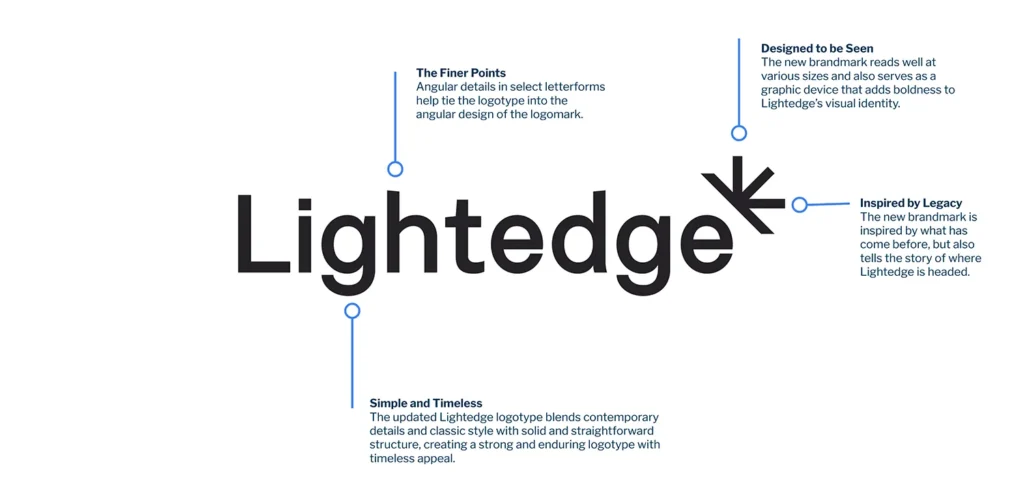How to Prove The ROI of Branding
Bookmark this for when your CEO asks, “Will a rebrand really be a smart investment?”
You never know what type of questions you’ll get when you’re presenting to a client.
We were presenting a rebrand to a client team recently—fresh logo, new messaging, a design system to represent the brand across different mediums—when the client’s CFO leaned forward with a question:
“This looks great. But how will it help us reach revenue goals this year?”
He wasn’t being difficult. He was being smart and doing his job. That question was one we had asked too, because no rebrand or brand refresh is ever about just looking prettier. Rebrands are always about helping companies perform better.
Here’s the simple framework you can use to prove that investing in branding efforts will be worth the return.
Step 1: Decide what success looks like (before you start)
Before you even hire a branding agency, get your decision-makers in a room and ask two crucial questions:
What specific business goal is this rebrand supposed to help with? How will we know if it’s working?
Most companies are trying to accomplish similar things:
- Getting more customers: Increasing mindshare (a fancy word for how much your brand is the first one that comes to mind for your audience), driving more website traffic, generating more demand and leads, and closing more deals
- Charging higher prices: Positioning the brand as premium to justify better rates and attract bigger clients
- Attracting better employees: Hiring faster, decreasing recruiting costs, and getting top talent to choose your company
- Standing out from competitors: Getting higher brand recognition, more word-of-mouth referrals, and a reputation and image that overshadows other players in your space
- Building trust and credibility: Having easier sales conversations and more partnerships
Write down your specific targets and refer back to them constantly. This becomes your North Star for the entire project—from selecting an agency and going through the process to determining your brand rollout strategy and measuring success.
Step 2: Document where you are right now
Memory is terrible at tracking progress, so spend a few days gathering hard numbers:
Website performance: How many people visit your site? What’s the conversion rate? Time on page? What percent of traffic comes from branded search (users using your company/product name in their search query)?
Sales pipeline: This is your customer journey from “curious” to “paying customer.” Track things like:
- Marketing leads: People who show interest in your brand (by downloading something, signing up for emails, attending an event) but aren’t necessarily ready to have a sales conversation.
- Qualified prospects: People who actually might buy. They need your service, have indicated intent to buy, have budget and are a decision-maker on their company’s buying committee.
- Pipeline velocity: How quickly do prospects move through the sales process? If the average sales cycle is nine months before a rebrand, and seven months after, that’s a clear indicator the rebrand resonates with your audience.
- Sales: How many prospects become paying customers? What’s the average deal size? Average lifetime value of a client? Look for improvements in close rates, deal sizes and lifetime values.
Brand perception: A survey asking clients and prospects, “How likely are you to recommend us?” or “What comes to mind when you think of our company?” will help you understand where your company stands in the market. Sending the same survey 6-18 months after the rebrand has rolled out will spotlight how perception has changed.
Hiring metrics: How long does it take to fill empty positions? How much do you spend on recruitment? What quality of candidates are applying?
Save everything in a “Before the rebrand” file. This info will be priceless later.
Step 3: Connect design choices to a business result
This one is nuanced, but it’s really important.
As the new brand is shaped, it shouldn’t just make things look good—it should make things work better. As you review creative decisions, ask “How does this help our business?”

Above: creative rationale for the Lightedge brand evolution.
New logo → a modern image that’s easier to remember → more traffic and leads
Clearer messaging → less confusion for your customers → higher conversion rates
Custom (not stock) photography → your company feels more trustworthy → shorter sales cycles
Sometimes, if a creative choice doesn’t connect to a business goal, it’s not worth doing.
But… not always.
This video from designer Jessica Walsh has been going viral, and she makes an important point. Brands can get over-engineered by branding teams trying to justify every single decision with deep meaning. (Remember the Pepsi brand guides that compared the Pepsi logo to the Mona Lisa, the Fibonacci sequence and the Earth’s axis?)
Sometimes humor is the strategy. Sometimes simplification is the strategy.
Or as Walsh says, sometimes the reason is, “because it freaking looks better.”
Step 4: Share stories that stick
Numbers are important, but stories are memorable. Find real examples of companies that saw measurable results from rebranding:
“After Company Y updated their brand, their average deal size increased from $50K to $75K because clients perceived them as more premium.”
“Company X redesigned their website and saw 40% more demo requests in three months, leading to $2 million in new revenue.”
Format: What changed → What improved → What it was worth in dollars
Simple stories travel much farther than just charts and spreadsheets.
Step 5: Check progress at key milestones
The impact of a rebrand doesn’t happen overnight. Set expectations with your leadership early on to prevent questions like “We rolled out the brand on Tuesday and it’s already Friday. Why aren’t leads up yet?”
Outcomes will be evident at different points after the launch. Here’s what to look for and when:
30 days post-launch: Early signals (website traffic, social media engagement, initial feedback)
90 days post-launch: Clear trends (lead generation, sales conversations, hiring activity)
12 months post-launch: Full impact (revenue changes, market position, long-term growth)
But even these can vary. More complex rebrands, like rebranding for mergers and acquisitions, can take longer to see the full results.
To share the impact, create a simple dashboard that pulls metrics from platforms like Google Analytics, HubSpot, Google Search Console and your social media channels—and give access to the executive leadership team. Even a shared Google Sheet can do the trick.
Step 6: Tie the rebrand to the results
When good things start happening, some people will wonder: “How do we know it was the rebrand and not something else?”
The not-great news: it’s really difficult to prove that definitively.
The better news: with the data you gathered before the branding efforts, you can draw clear connections that tie the input to the outcomes.
Here’s how:
Limit other big changes: Don’t launch major marketing campaigns during the first 30-60 days with the new brand
Compare: Highlight performance improvements that have happened post-launch. Sometimes the results aren’t what you expected. A boost in organic branded searches means your brand is more memorable, and people are looking for your company after seeing an ad, email or social post. A decrease in employee turnover suggests team members feel more energized, aligned and proud of the new brand.
Listen to customer feedback: Ask sales and customer service teams to share comments they hear from clients, like “Your new website finally makes sense,” or “I love the new ads.”
Track outside recognition: Note press coverage, industry awards or analyst mentions
Be ready for common questions (with honest answers)
How long before a rebrand pays for itself? When they set clear, strategic goals up front, most mid-sized B2B companies see their money back within 6-12 months.
Is now really the right time to rebrand? Maybe, or maybe not. If your company is facing any of these situations, it’s time to update your brand.
How can we make sure the investment is worth it? Being in lock-step on your goals and strategic business direction before we start the rebrand—and not skipping the “before” metrics. Without knowing where you started, proving the return is nearly impossible.
The branding bottom line
Proving the ROI of branding and marketing will never be a perfect science—there’s just too many variables. But marketers can do a better job of connecting the results of a rebrand to what their leadership cares about.
Establish goals and baseline metrics, set expectations appropriately and be patient when tracking progress. Do that, and the CFO will be asking when your next project can start.
Branding,Marketing



